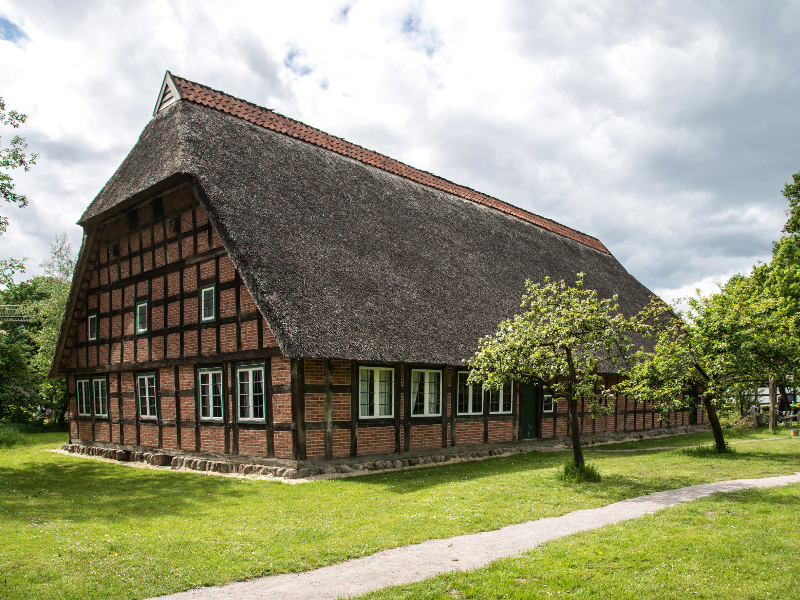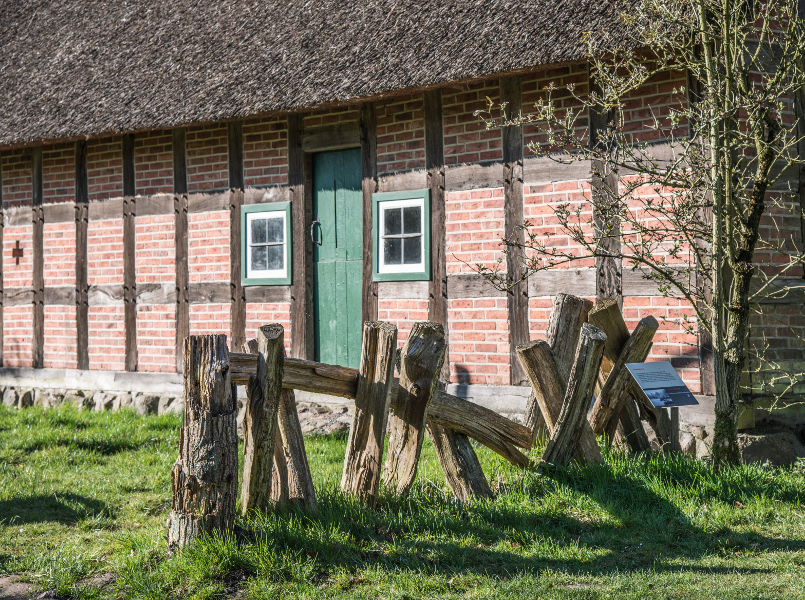Hoffmann Farm from Goldenstedt
Hoffmann Farm from Goldenstedt (Vechta County), built between 1835 & 1840. Re-constructed at the open-air museum in 1938.

When cattle were smaller
Hoffmann Farm from Goldenstedt (Vechta County), built between 1835 & 1840. Re-constructed at the open-air museum in 1938
Anyone who thinks that the cattle in the eight stalls along the foyer must have been crowded is making an error. When the Hoffman Farm was built, a cow weighed 250 kg on average, was roughly 120 cm tall and produced roughly 2,000 liters of milk annually. Today, they achieve a weight of up to 750 kg, stand up to 150 cm tall and produce an average of 8,00 liters of milk. This is only one aspect of many that distinguishes this farm from a few other as two hundred years older than the modern farms. A second noteworthy difference is the open fire in the hearth, over which the meals were cooked. Like many houses in this region that were built without chimneys, the smoke was drawn through the house to the foyer and through the thatched roof outwards. Only the living areas with their cupboard beds were more or less free of smoke, because the iron stoves diverted their fumes through the walls to the hearth.

Agricultre and Plans
With 36 hectares of land, the Hoffmann Farm was among the medium-sized agricultural business of its time. Acreage for growing grain formed the core of the farming business in this coastal region and the wonderful soil offered rich storage for rye and straw. The neighboring barn constructed for Windberg Farm from Schwaneburg near Friesoythe in 1760 in Cloppenburg Country proves that other options for storing hay were used. The thick wooden plaiting of the walls permits continuous ventilation of the harvest and ensures quick and continuous drying. An inscribed beam from the time of its construction simultaneously makes it clear that hay, like grains, were among the most valuable trade goods of their time. The inscription reads: “O GOT ERFVL DESEN HAUS MIT VI, DIESER SCHEVREN MIT FVTER, 1759 GELT EINSTAVSENT PVNT HEU SIEBEN REIGESTALER“ [Oh God, fill this house with animals, these barns with food. In 1759, a thousand pounds of hay were worth seven Reichsthaler.] Correspondingly, a ton of hay had a trade value of seven Reichthaler. This information was so important that it was chiseled where it could not be missed.
